Bristol Water Southern Strategic Support Main (2018)
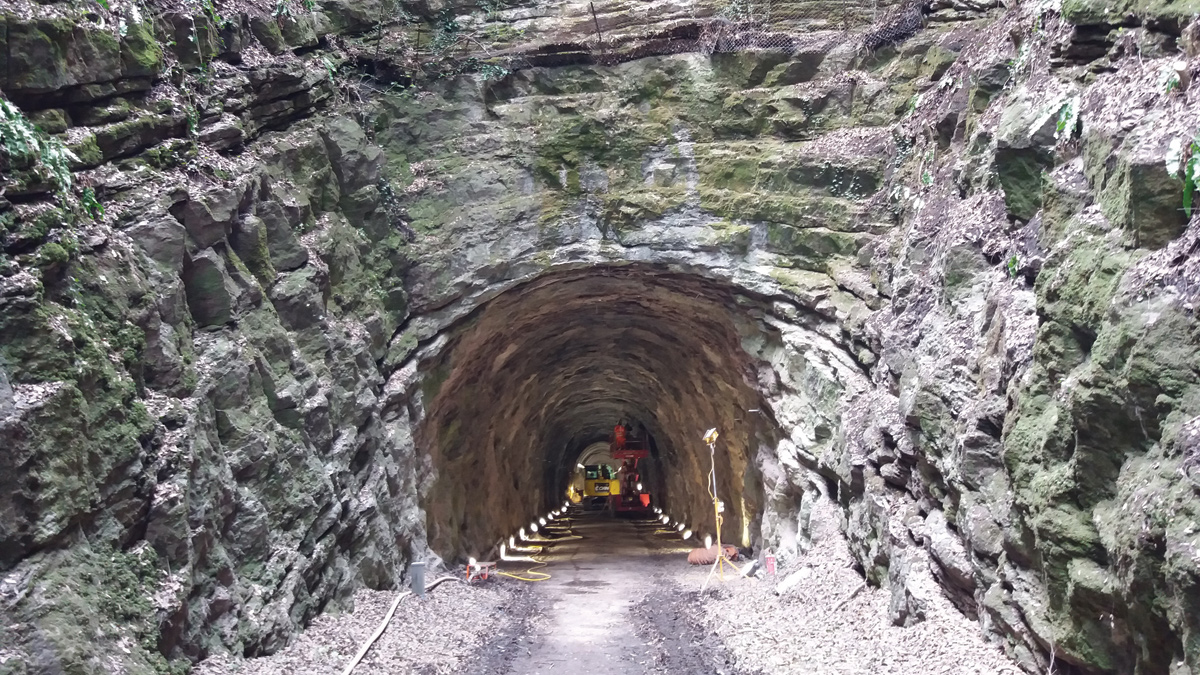
Southern portal of Shute Shelve Tunnel - Courtesy of Bristol Water
The Southern Strategic Support Main (SSSM) comprises a 700mm diameter pipe line between Barrow WTW in south Bristol to Sandford, a distance of 19km, and a 600mm diameter pipe line between Cheddar WTW and Banwell a distance of 11km. The two pipelines connect at Sandford. The project commenced with a review of the outline proposal that was supported at PR14. Black & Veatch (now Binnies) was retained from AMP5 to provide design services and the philosophy of the project’s requirements was interrogated.
Environmental impact assessment
The resultant route selection and removal of a storage reservoir shaped the activities of the project team through to December 2016, when the screening opinion of Sedgemoor District and North Somerset Councils regarding the need for an Environmental Impact Assessment would be received. The team was disappointed to learn of the planning authority’s decision that an EIA would be necessary and Bristol Water was denied permitted development rights. Consequently, the process of preparing a formal planning application for the project commenced.
The need for a planning application had not been factored in to programming and the regulatory deadline for the scheme to be operational by April 2018 appeared even more challenging than originally envisaged.
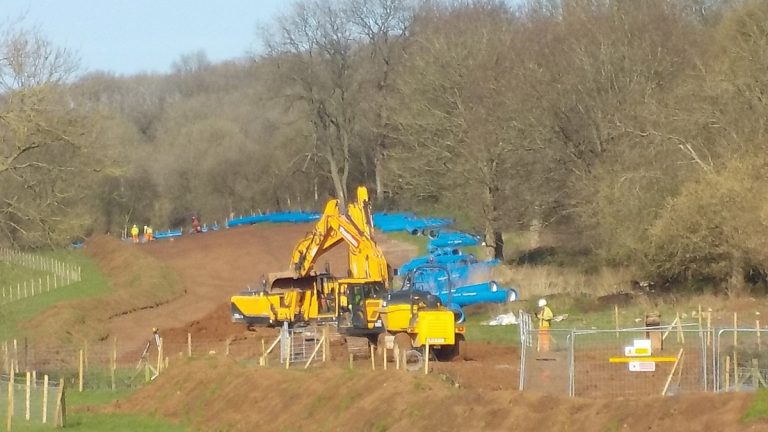
Stringing of ductile iron pipe near Axbridge – Courtesy of Bristol Water
Planning application
The planning application necessitated the appointment of a consultant to manage the process and Arup was appointed, who had supported the Cheddar Two Reservoir project in AMP5. The revised programme had to consider the 16-week decision period of the planning authorities and Arup worked towards an April submission date and August for the notification of decision. Without the planning permission there was little that could be physically achieved on the ground. Arup’s task was to navigate the process such that the pre-commencement conditions were of an absolute minimum.
The detailed design proceeded in tandem with the preparation of the planning application. The necessary environmental surveys had previously commenced and these coupled with engagement with Natural England, and related agencies, shaped the environmental statement. Kier was contracted to provide Early Contractor Involvement and provided valuable contributions to the planning application documentation.
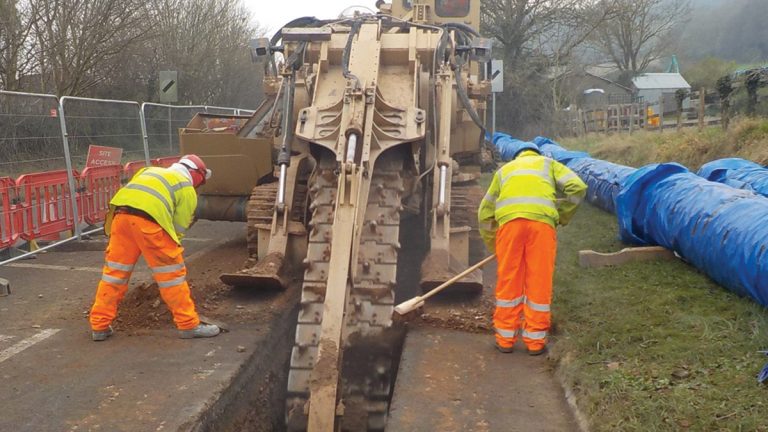
Trencher in operation at Axbridge – Courtesy of Bristol Water
Material selection
A key decision during the design process was the selection of the material to be used for the pipe. The two basic options were either ductile iron or polyethylene. The decision making process considered the cost of material and the cost of installation and it became apparent that the most cost effective solution would be achieved by opting for ductile iron. The base cost of steel had been suppressed by world markets at the time of the enquiry document being issued and it was this that had a significant bearing. The decision was essentially made for us.
Having made the decision to opt for ductile iron the procurement team commenced the search for a suitable supplier. The incumbent framework supplier to the South West Hub, Saint Gobain PAM UK, was approached first and they were keen to secure the order for the bulk of the required materials. They worked to identify possible cost saving solutions, one of which was to question the need for an epoxy seal coat to the cement lining; an idea that had been utilised on a previous large diameter pipeline for a neighbouring water company. After much discussion with the designer and process science colleagues it was confirmed that the omission of the seal coat could be implemented.
The offer that Saint Gobain PAM UK made, following a little negotiation with procurement colleagues, ultimately proved sufficient to secure the order for the pipes. All that was needed now was to release sufficient capital from the budget to permit the order to be placed. At this stage the main contractor had not been appointed and the pricing of the project was far from complete.
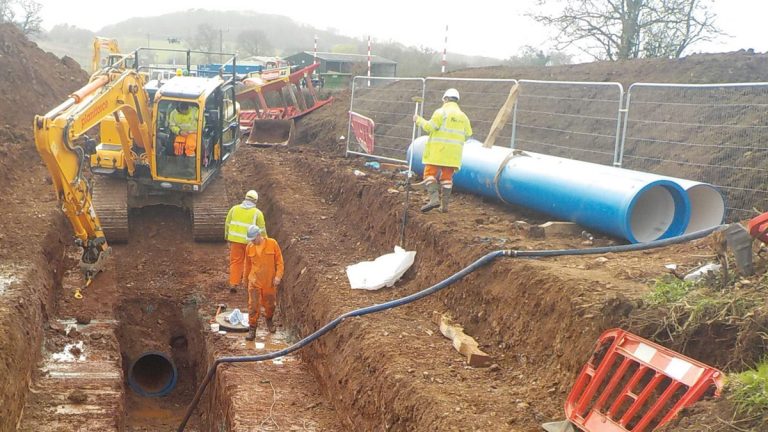
Benched excavation at Congresbury – Courtesy of Bristol Water
Pipeline planning
The route of the pipeline would predominantly lie in fields and avoid major transportation routes. The technique to be adopted would be open-cut but some features would require specialist intervention. An ancient woodland at Barrow had been identified as a dormouse habitat and its status led to designing a drilled crossing for this location. A concern was the level of bedrock indicated on the boreholes and whether there was sufficient room to be deep enough without hitting the rock. The solution arrived at was a twin bore pipe at this location that enabled the reduction of the depth of the invert without compromising the cover to the crown of the pipe. Directional drilling solutions were adopted for a river crossing and a major A-road crossing.
The main geological feature that had to be addressed was that of the Mendip Hills. A number of options were available, in so much that existing cuttings could be utilised, but the team explored the option of using an existing former railway tunnel which currently accommodated a cycle route and pedestrian footpath. The tunnel belonged to the local council and what impact of the work might have on the structure itself had to be considered.
An expert in vibration monitoring was engaged with a view to identifying upper limits for the construction activities in relation to the capacity of the structure to withstand them. Background investigation and analysis were conducted and the development of monitoring regimes commenced.
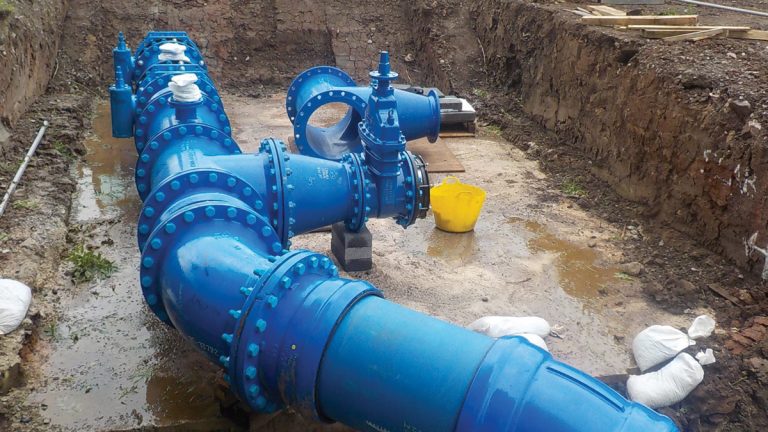
Connection under construction at Banwell Riverside – Courtesy of Bristol Water
Environmental and ecological challenges
The final route for the pipeline was confirmed and negotiations continued with Kier ultimately resulting in their being awarded the main contract for the pipe laying activity through an extension to their existing framework. The work was further subcontracted to three separate pipe laying contractors each securing their own specific sections. The first pipe was laid in December 2016.
The decision to utilise the former railway tunnel raised a number of environmental and ecological challenges. Ecological surveys of the tunnel identified the presence of lesser and greater horseshoe bats necessitating dialogue with Natural England regarding mitigation measures to prevent undue disturbance. It was concluded that closing off the tunnel portals was impractical and so a strategy of utilising lights as mitigation was agreed upon. The theory was that high intensity lights would deter the lesser and greater horseshoes.
During the initial accommodation works to install the lighting, a minor rock fall from the tunnel roof was experienced. The health and safety ramifications of this incident resulted in a complete re-think of the construction methodology in order to arrive at a solution that could be constructed safely. The trenching through bed rock within the tunnel was considered to be far too great a risk in terms of vibration and the potential for further falls. The pipe was therefore re-designed such that it was laid at a shallow depth above the bed rock with reduced cover thus almost eliminating the vibration concerns. The council agreed that the reinstated surface of the tunnel floor could be higher than the existing levels in order to accommodate the re-design.
In addition to the re-design, to address the potential for further rock falls loose rock was removed by descaling and safety netting was installed to the roof of the tunnel.
The work to install the safety netting to the tunnel roof commenced under licence but it soon transpired that the mitigation strategy in respect of the bats was not having the desired effect; the bats were not deterred by the lights. The works were suspended and the specialist contractor was demobilised from site during further discussions with Natural England. Special dispensation from Natural England allowed for the completion of the netting installation; but a significant delay had been incurred.
Bristol Water Southern Strategic Support Main – Table of designers, contractors and suppliers
- Outline & detailed design: Black & Veatch (now Binnies)
- Principal contractor/pipe laying: Kier Integrated Services Ltd
- Archaeological services: Wessex Archaeology
- Environmental services: Black & Veatch (now Binnies)
- Planning services: Arup
- Land agency: Bruton Knowles
- Connections: J Murphy & Sons
- Ductile iron pipe and fittings: Saint Gobain PAM UK
- PE pipe: Aliaxis UK (formerly GPS PE Pipe Systems)
- Electrical installations: Combined Building & Electrical Services
- Fittings: Viking Johnson
- Valves: Industrial Valves Ltd
- Fittings: Frazer
Pipe laying
Having completed the necessary accommodation works with regard to the safety of the workforce the pipe laying activity commenced. It was now mid-September but work in the tunnel would be suspended at the end of October due to the bat hibernation period. The pipe was laid and as much reinstatement as possible was undertaken in the time available, but the work could not be completed before November 2018 and so the tunnel was vacated and left alone until the spring. Hopes for an early spring were forlorn when March 2018 brought snow and heavy rain and consequently works on reinstatement did not commence until mid-April.
A section of the new main was laid in the carriageway of the Axbridge bypass and it was agreed with the local highways authority to complete this work outside of the summer holiday season. The pipe laying activity was completed in Spring 2017 but for logistical reasons it was not possible to conduct the pressure testing until later. Temporary road reinstatement was provided with a view to completing the permanent reinstatement after testing. As it transpired the testing was not completed until February 2018 and the final reinstatements were not completed until May 18.
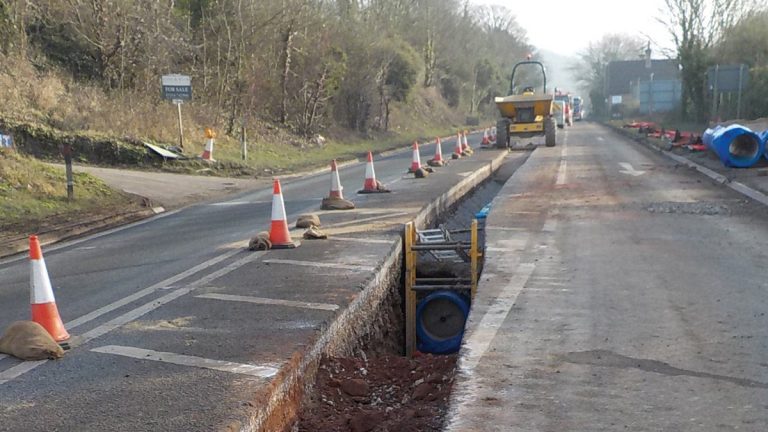
Installed pipe at Axbridge – Courtesy of Bristol Water
Pressure testing
The provision of test water for the completed sections of mains provided its own challenges. The position of test ends within the design had been included at approximately every 1000m, the sections had not been constructed sequentially. Therefore there were discontinuities in the main which resorted to tankering water for testing on specific sections. Other sections simply had to wait for adjacent sections to be completed before testing could continue with the water being supplied from established connection positions.
The inability to complete the pressure testing systematically had programme ramifications and consideration was given to the disinfection process. It had already been decided that long sections of the completed main, up to 10km in length, would be chlorinated and the adopted method was for a volume of chlorinated water to be introduced into the main and be transitioned along whilst being monitored for concentration. The hope was that this method would shorten the overall duration for the activity, but whilst successful, it ultimately did not offer considerable time savings.
Conclusion
The final length of main to be chlorinated was completed in March 2018 and the final connections were duly completed. The main in its entirety was ready to be used for the necessary pump tests which would prove the functionality of the system.



